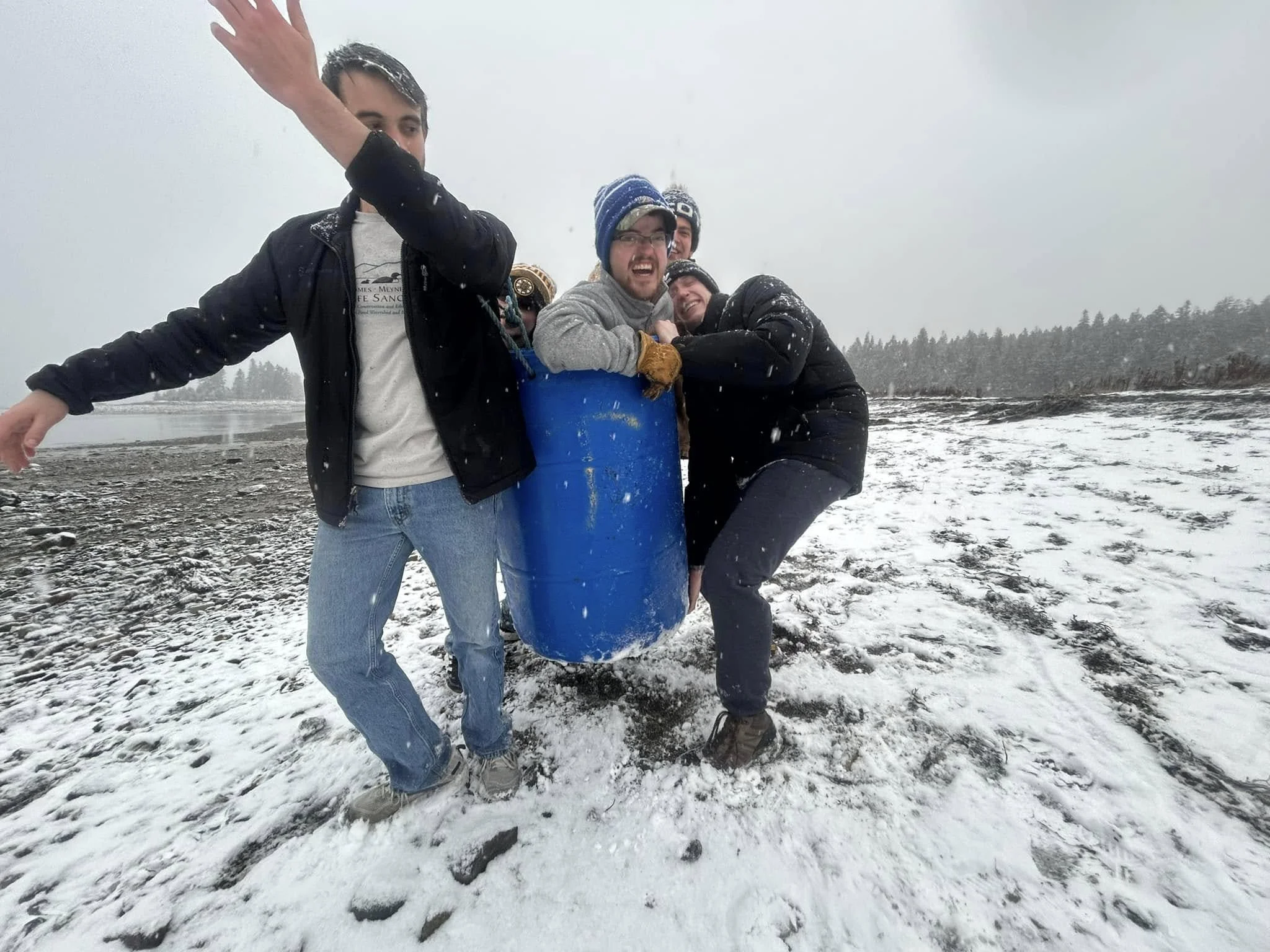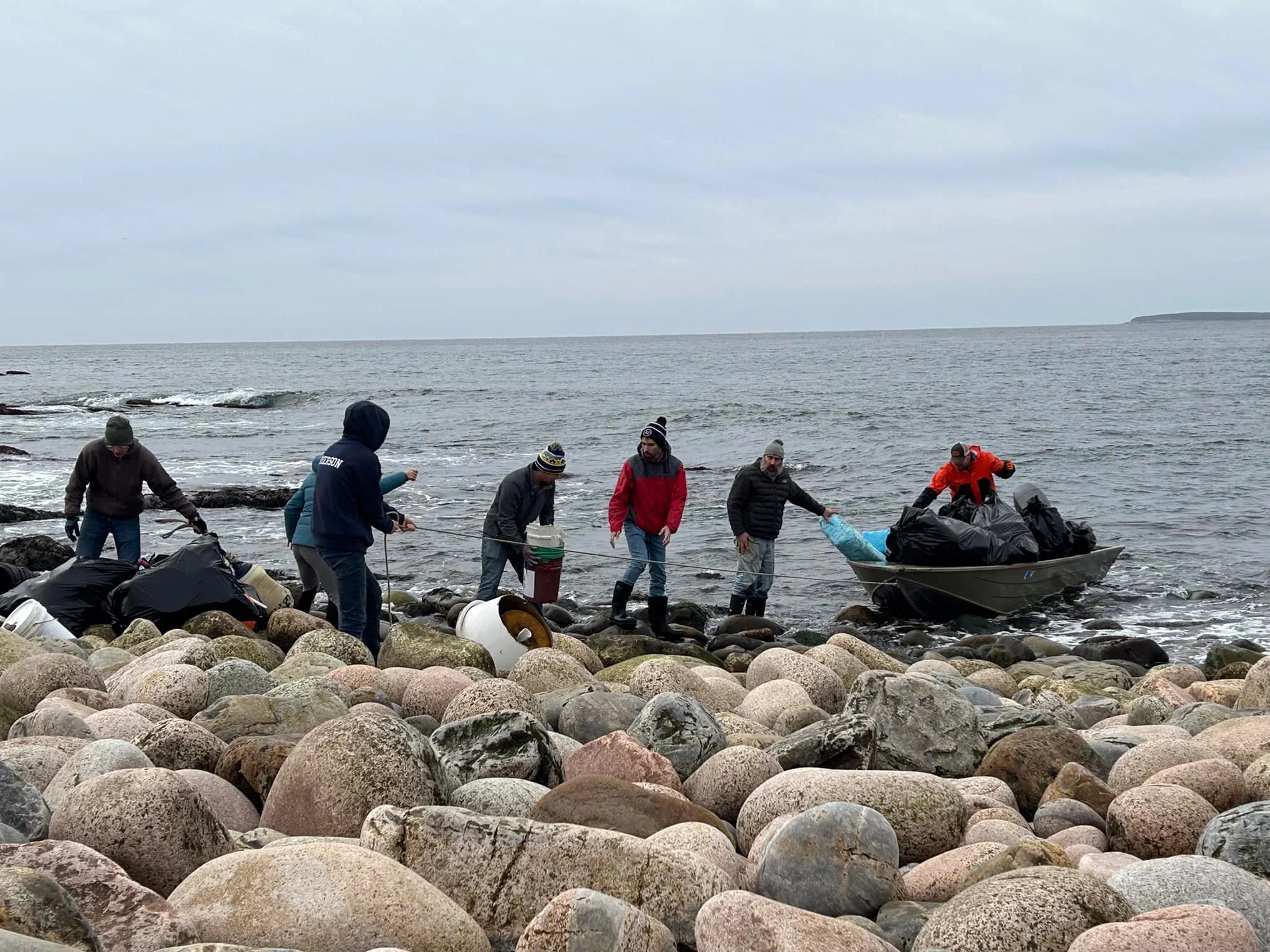Shoreline Cleaning Hazards
Picking shore debris and returning wild land to a natural looking condition is immediately and immensely satisfying, fun, addictive hard work. Debris cleaning does involve risks. All Clean Maine Shores volunteers participate at their own risk, fully understanding that hazards to health and life are real and substantive.
Falls can occur and you may be a long way from emergency services. Maine’s shoreline is rocky, irregular, there are slippery rocks, barnacle covered ledges, seaweed covered rocks, loose footing, and steep bluffs. Rogue waves, surf, tides, frigid waters, boats and anything involving the sea brings with it risk.
There can be brutal biting insects with associated discomfort, diseases and possible allergic reactions. Ticks are encountered that might carry Lyme or other sickness. Brown-tailed moth caterpillars that cause skin and respiratory reactions are known along the shoreline. Plants and bushes like thistles and Rosa rugosa provide prickly spines to bloody unprotected skin. The weather and elements provide challenges ranging from frostbite and hypothermia to heat exhaustion, heat stroke, and sunburn depending on the season. Poking one’s face or eyes while reaching into a thicket is a concern and getting scratched and sore along the way is nearly unavoidable.
These are just a few examples of hazards that might be encountered while volunteering along the shoreline. It is the responsibility of each individual to do their own research about outdoor and shoreside risks and determine if the activity is appropriate for them before venturing forth or joining an organized Clean Maine Shores cleanup.

